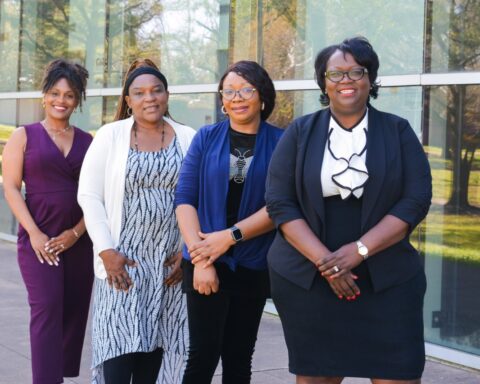In the coming weeks, state and local governments will have to decide how to spend $350 billion in flexible, federal aid that will be distributed as part of the $1.9 trillion American Rescue Plan.
One important way they can spend these funds is to invest in women so that it is possible for millions of them to enter or re-enter the workforce and remain in it.
Millions of Americans are out of work and widespread layoffs at the start of the pandemic affected many female-dominated industries, like retail, hospitality and restaurants. Black and Latina women have been especially hard-hit. In January, the labor force participation among women hit its lowest rate in 33 years, according to a National Women’s Law Center analysis. The April’s jobs report showed that women are continuing to drop out of the labor force — an issue that is likely exacerbated by the difficulty of balancing child care with paid work.
President Joe Biden’s proposed American Jobs Plan could create millions of middle-class jobs. It includes a much-needed $100 billion investment in workforce development initiatives that have been demonstrably successful in training workers for the high-quality careers of tomorrow — such as health care, manufacturing and clean energy — with a special focus on hardest hit populations. Along with the American Jobs Plan, Biden’s proposed American Families Plan would make critical investments in care infrastructure and caregiving occupations — giving a vital boost to a sector dominated by women. But a recent Georgetown University study finds that 90% of jobs historically categorized as infrastructure, such as construction and transportation, are held by men, and most new jobs created through the American Jobs Plan would be in fields that are currently male-dominated. Registered apprenticeships, a proven way to bring workers into good jobs, are only 9% female, according to the study.
It’s not the skills required or the nature of the work itself that is keeping women out of these jobs. But rather that we — as a nation, states and localities, as well as employers — need to do a better job of breaking down barriers so that women can access these roles too, and ultimately succeed in them.
Research shows that the most successful workforce development programs provide intensive wrap-around services, like child care and transportation support, emergency funds, and intensive coaching during training, job placement and while on the job. These supports are particularly important for low-income people, parents and youth. For women, access to child care in particular is essential to workforce participation.
The American Families Plan offers critical policies that will help women in the workforce — like child care, paid leave and free community college. But the fate of Biden’s proposed American Families Plan is unknown, and with $350 billion in funding already provided through the American Rescue Plan, states and localities can begin right now to improve existing workforce development programs, and launch any newly created programs with an eye toward equity.
A recent study from Harvard University on sector-based training with comprehensive wraparound services found that participants in these programs saw “substantial and persistent earnings gains (11% to 40%) following training.” While the American Rescue Plan included critical direct payments to help low-income and essential workers pay for childcare, the additional aid to state and local governments can provide or expand wraparound services to more workers, removing some of the very real barriers that keep women out of the workforce or stuck in low-wage occupations.
And while these policies can be designed with women in mind, ultimately, they benefit all workers.
State and local use of this funding is subject to Treasury guidance issued last week. But some of the ways this flexible funding can likely be put to use immediately for workforce development program participants include providing or increasing childcare and transportation subsidies, emergency funding for students who would otherwise need to drop out of training programs (similar to provisions in the CARES Act), and funding to community colleges and other intermediaries to increase free career counseling that is tied to local/regional employer demand (even if participants are enrolled in outside training).
While there is a clear need to help workers now, this one-time funding can also be used to plan for the future. It can help cover the upfront costs to bring proven job training programs to their states. into states for the first time. And it can also be used to build lasting, real-time data systems that help states collect and analyze workforce data — including on the gender pay gap — and use that to drive states’ education investments.
These flexible funds from the American Rescue Plan — coming to your state and locality — can be the bridge that millions of unemployed or underemployed women need to advance in their careers and provide for their loved ones — particularly if matched with critical, much-needed protections at the state level such as pregnancy non-discrimination, salary history bans, pay transparency laws, stronger sexual harassment policies, and paid sick and family leave. And if there is more funding to build or improve workforce development systems through the American Jobs Plan, for example, states and localities will have a running head start on how to make them work and make them work for everyone.





